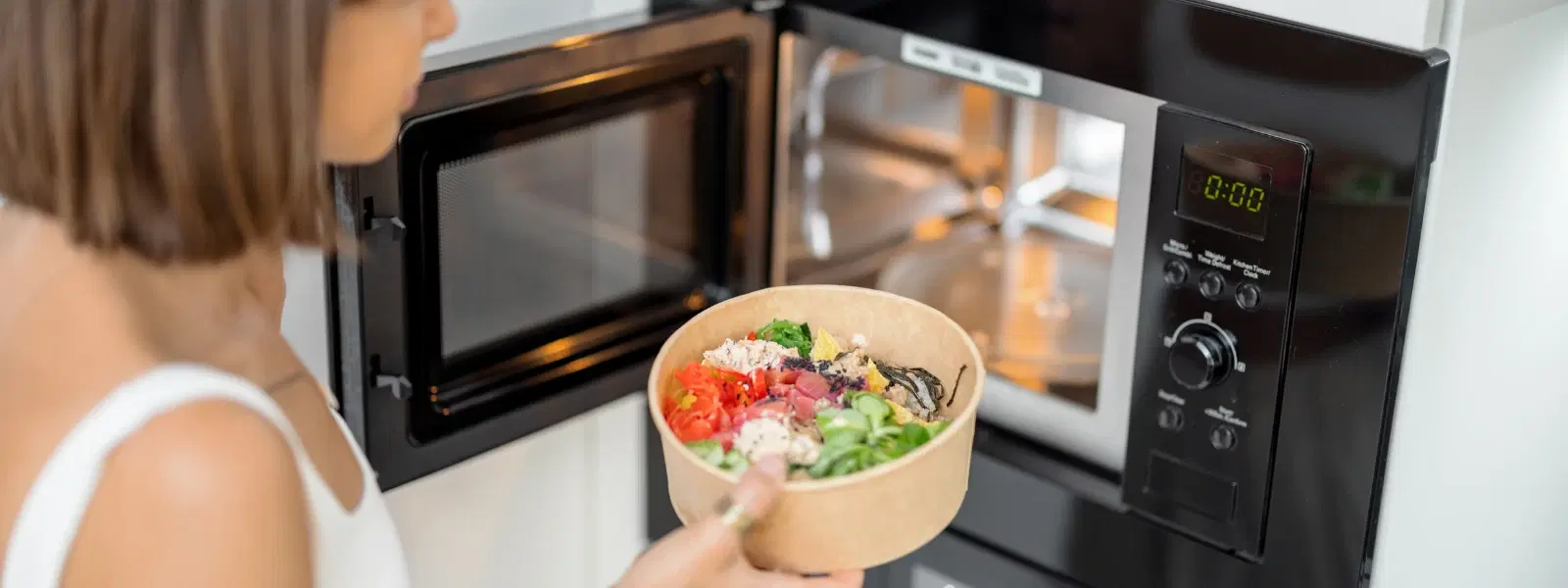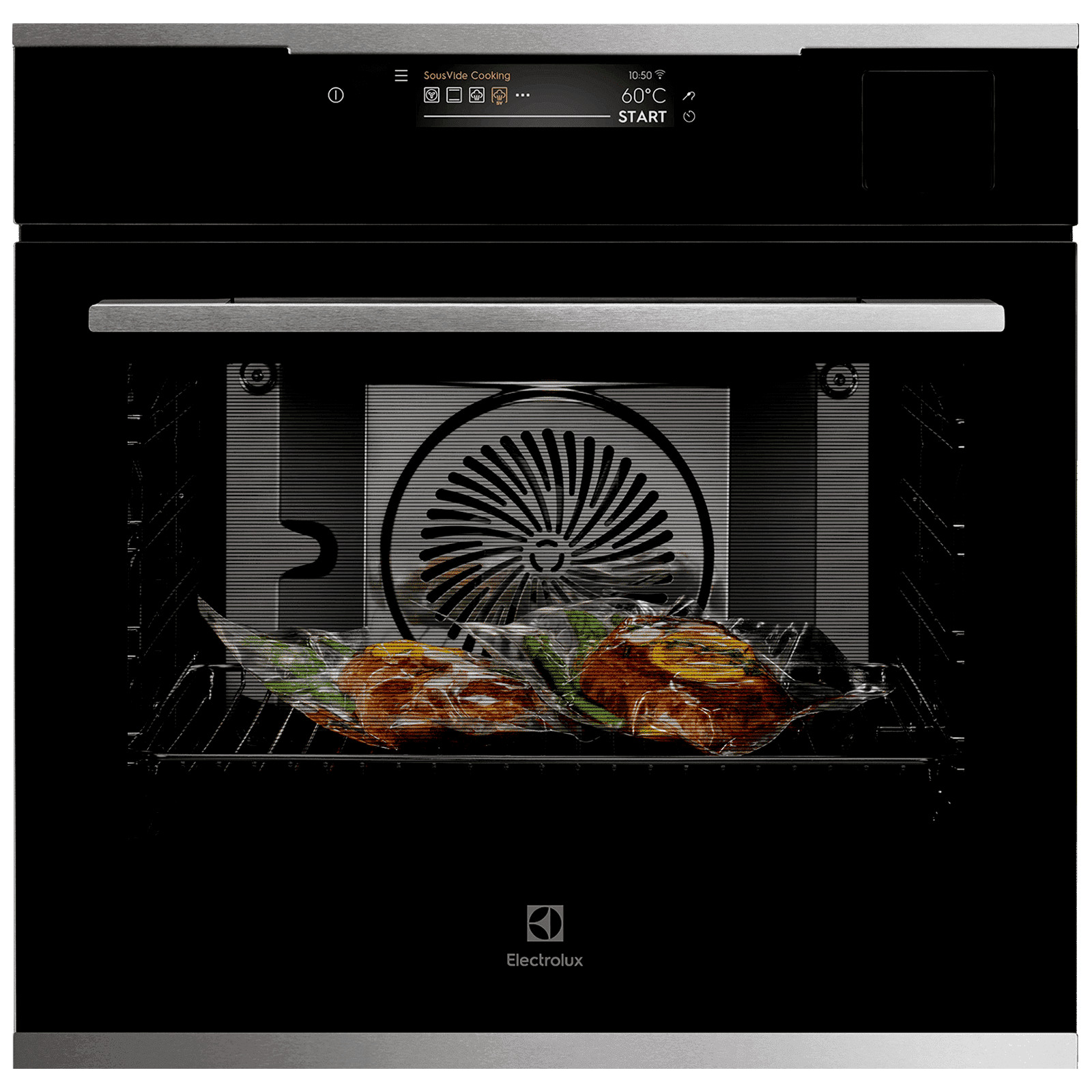
Home Appliances
•04 min read

Buy HADEN Perth Sleek 20L Microwave Oven with Digital Timer (Slate Grey) online at best prices from Croma. Check product details, reviews & more. Shop now!
Ever wondered why your favourite bowl cracked in the microwave or why your food didn’t heat evenly? The secret lies in choosing the right utensils used in microwave cooking. In this guide, we will explore 10 microwave-safe utensils to ensure hassle-free cooking, focusing on safety, efficiency, and optimal performance. By reading on, you will discover which materials and types of microwave cookware are best suited for your everyday needs.
Microwave-safe utensils are designed to withstand high temperatures without cracking, melting, or causing sparks. These utensils are manufactured using non-reactive materials that ensure your food cooks evenly and safely. The importance of using heat-resistant cookware cannot be understated, as it prevents untimely mishaps and extends the life of both your microwave and the utensils.
Utensils used in microwave cooking are crafted predominantly from glass, ceramic, microwave-safe plastics, and silicone. When comparing glass vs plastic for microwave use, glass typically offers superior durability and even heat distribution. However, plastics tend to be lighter and more affordable. Ceramic dishes for microwave use not only bring an aesthetic appeal to your table but are also renowned for their sturdiness. Silicone, with its flexible and non-stick nature, provides an excellent alternative for baking and steaming. Each material resonates with a specific benefit for microwave-friendly containers and kitchen tools.
Glass containers are a favourite for reheating and cooking evenly in the microwave. These heat-resistant utensils are durable and non-reactive, making them a smart choice for daily use. Their ability to withstand high temperatures ensures that your meals are cooked to perfection.
Ceramic dishes bring style and strength into your microwave routine. Perfect for baking and reheating, they give a unique blend of form and function. Their sturdy build ensures longevity and an even distribution of heat, reducing the risk of unevenly cooked food.
Lightweight and versatile, microwave-safe plastic bowls are a practical option for many households. They are affordable and handy, though it is important to check for the microwave-safe symbol on the bowl to avoid any safety concerns related to melting or unwanted chemical leaching.
Silicone bakeware is gaining popularity for its flexibility and non-stick properties. These utensils can be a lifesaver for baking and steaming, ensuring that your treats and meals are released effortlessly from the mould alike.
When it comes to handling high-temperature cooking, heat-resistant glassware offers excellent performance. Known for its durability and resistance to thermal shock, this type of cookware is ideal for intense microwaving sessions.
Enhance your microwave cooking experience with non-metal utensils such as wooden or silicone spatulas. Designed for stirring and serving, these utensils avoid the risk of sparks associated with metal items, making them indispensable for safe indoor cooking.

Buy Electrolux Ultimate Taste 900 70L 60cm Built-in Microwave with SteamPro Technology (KOAAS31X, Black) online at best prices from Croma. Check product details, reviews & more. Shop now!
If you enjoy that extra crispiness in your meals, microwave crisper pans are a unique addition to your kitchen. They are specially formulated to brown food evenly, imparting a crispy texture that elevates the overall dining experience.
For storing and reheating leftovers, microwave-safe containers with lids are a practical solution. With features like steam vents and airtight seals, they offer the convenience of safely storing food while keeping nutrients locked in during heating.
Sometimes convenience calls for disposable options. Paper plates and towels, when used correctly, serve as temporary solutions for reheating. However, it is essential to be aware of their limitations and only use them as directed for safe usage.
Microwave-safe steamers are ideal for those who prioritise healthy cooking. By preserving the natural nutrients in your food and promoting even cooking, these steamers offer a fresh perspective on preparing balanced meals using best materials for microwave cooking.
It is crucial to never place metals in a microwave. Items such as steel and aluminium can create sparks and potentially damage your appliance. Ensuring that your utensils are free from metal components is a simple yet essential safety measure.
Styrofoam and plastics not marked as microwave-safe are risky choices. Using them could lead to melting or even chemical leaching, which is dangerous for both your health and your microwave's performance.
While glass is typically safe, those not designed for high temperatures can shatter due to thermal shock. Always opt for glassware that is specifically labelled as heat-resistant.
One of the easiest methods to determine if your utensil is safe for microwave use is the presence of a microwave-safe symbol. This icon, usually found on the base or back of the product, offers a quick confirmation of the utensil's suitability.

Buy Haier 20L Convection Microwave Oven with 66 Autocook Menu (HIL2001CSPH, Silver) online at best prices from Croma. Check product details, reviews & more. Shop now!
If you are unsure about the safety of your cookware, try heating it empty for a short duration. If the utensil remains cool, it is likely safe for future use.
Did You Know? Using the wrong utensils in the microwave can lead to uneven cooking and even damage your appliance. Always check for the microwave-safe label before use.
Keeping your utensils in top condition is essential for sustained performance. For glass and ceramic, gentle cleaning with warm soapy water works wonders without causing scratches. Silicone utensils require minimal care, though regular cleaning helps maintain their non-stick qualities.
Avoid abrasive cleaning tools that may lead to scratches and stains. For microwave-safe kitchen tools and containers, respecting the manufacturer’s guidelines will ensure that your utensils remain efficient and safe for years to come.
Metal utensils, non-microwave-safe plastics, and Styrofoam should be avoided as they lead to sparks, melting, or chemical leaching.
Glass, ceramic, microwave-safe plastics, and silicone are the materials best suited for microwave use.
No, they can cause sparks and potentially damage your appliance.
Look for the microwave-safe symbol or perform a brief heating test to confirm they remain cool.
Glass and ceramic are typically the best due to their durability and heat-resistant properties.
Microwave-safe utensils are essential for ensuring that your kitchen remains a safe and efficient space. By choosing the right cookware, you can harness the full potential of your microwave, avoid common kitchen mishaps, and keep your cooking experiences seamless. Remember, the next time you prepare your meal, focus on quality materials that allow you to cook with confidence and reliability, helping you enjoy a more stress-free culinary experience.